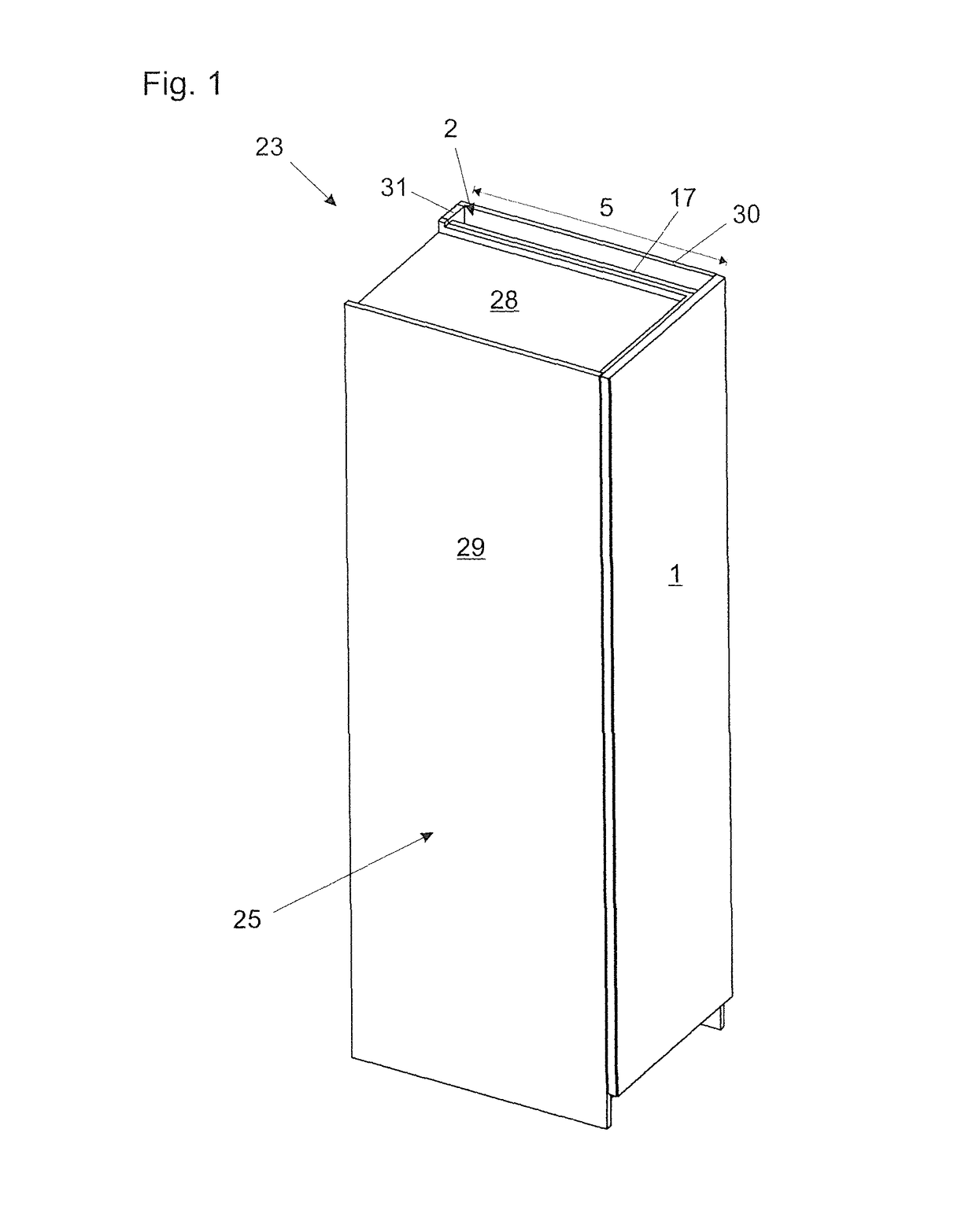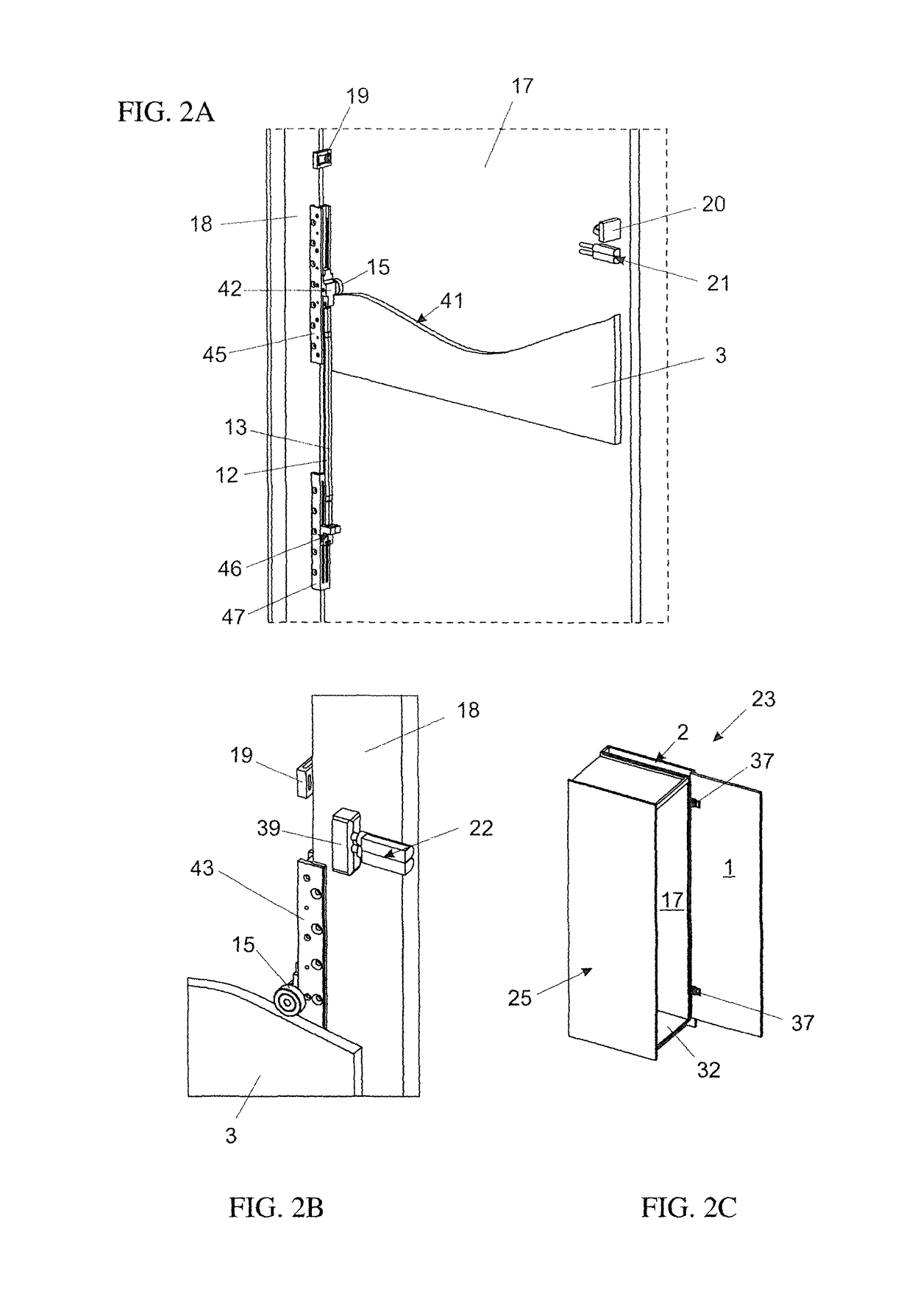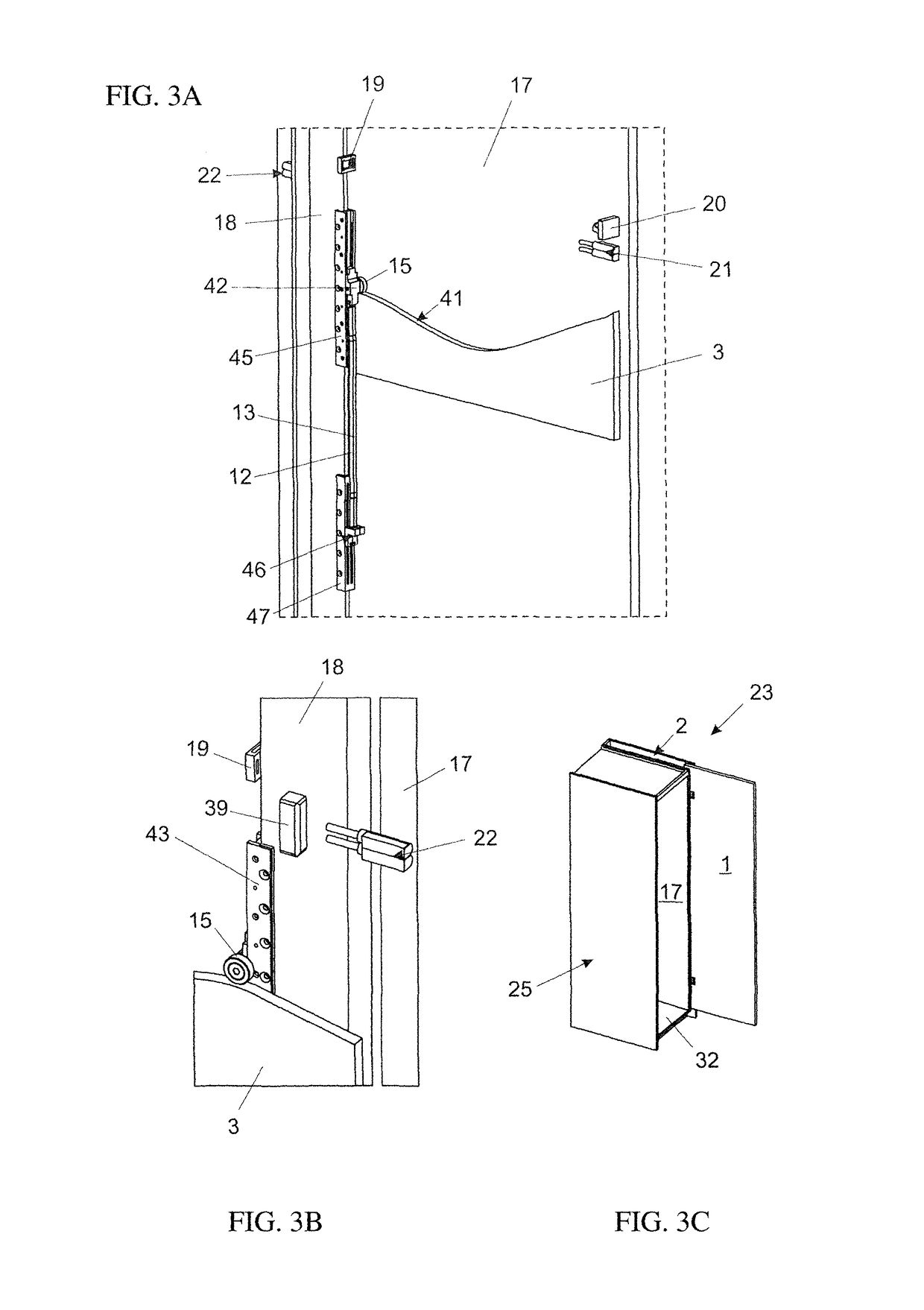Arrangement of a door and cavity for an article of furniture
a technology for furniture and wing accessories, applied in the direction of door/window fittings, wing accessories, wing arrangements, etc., can solve the problem that the operator has to exert a large physical effort to handle the furniture doors
- Summary
- Abstract
- Description
- Claims
- Application Information
AI Technical Summary
Benefits of technology
Problems solved by technology
Method used
Image
Examples
Embodiment Construction
[0028]In particular, FIG. 1 shows a first item of furniture 23 in the form of a cupboard which includes a furniture carcass (furniture body) 25 which is composed of a multiple of side walls 29, 17 and 30 which are arranged in parallel relationship relative to one another, a rear wall which includes a partial section 31, the cover plate 28 and a base plate 32 (see FIG. 2c for example), and a furniture door 1 by way of which the item of furniture 23 can be closed. The side walls 17 and 30 being spaced from one another and the partial section 31 of the rear wall represent limiting surfaces for defining a chamber-formed cavity 2 of the furniture body 25. The width of the side walls 17 and 30 and the cupboard 23, respectively, define the depth 5 of the cavity 2.
[0029]The furniture door 1 is fastened to a base fastening element 18 by hinges 37, wherein the base fastening element 18, as shown in the following figures, is operatively connected to the drive device.
[0030]As shown in particula...
PUM
 Login to View More
Login to View More Abstract
Description
Claims
Application Information
 Login to View More
Login to View More - R&D
- Intellectual Property
- Life Sciences
- Materials
- Tech Scout
- Unparalleled Data Quality
- Higher Quality Content
- 60% Fewer Hallucinations
Browse by: Latest US Patents, China's latest patents, Technical Efficacy Thesaurus, Application Domain, Technology Topic, Popular Technical Reports.
© 2025 PatSnap. All rights reserved.Legal|Privacy policy|Modern Slavery Act Transparency Statement|Sitemap|About US| Contact US: help@patsnap.com



